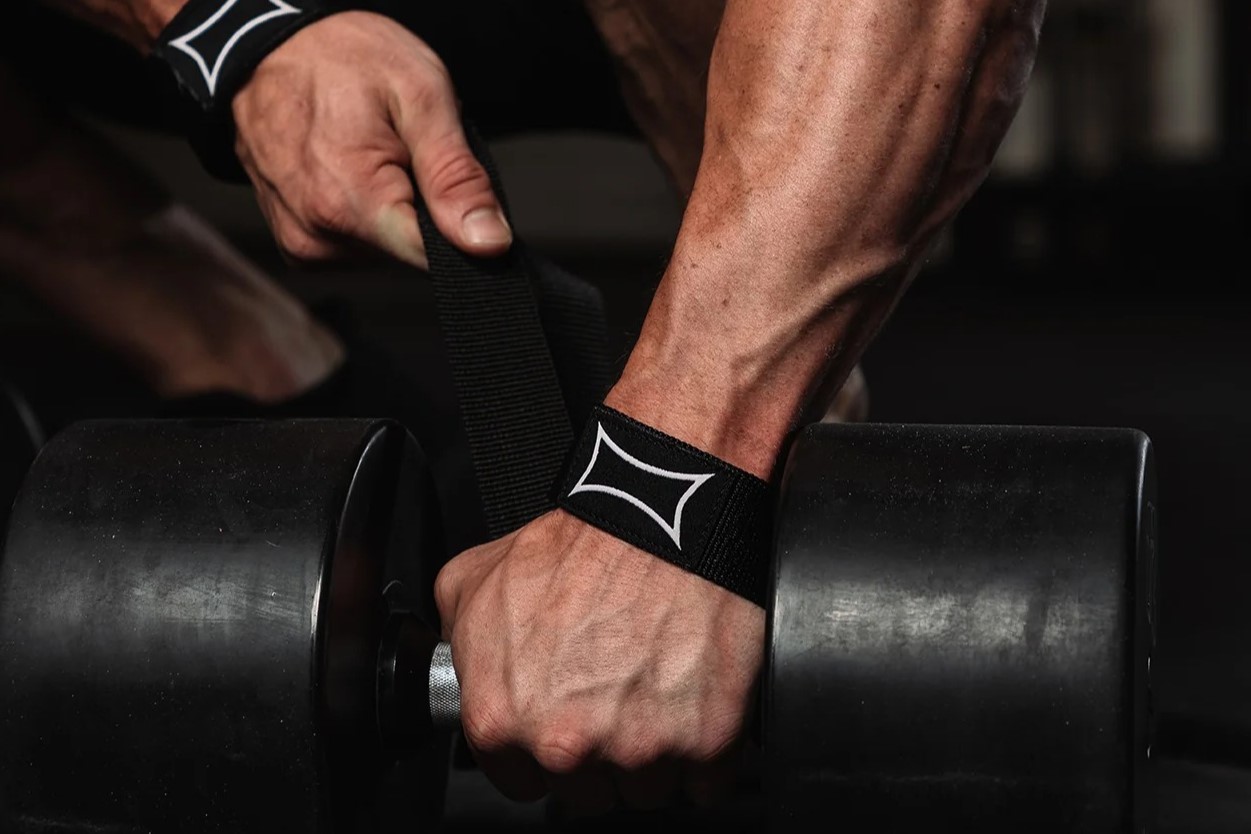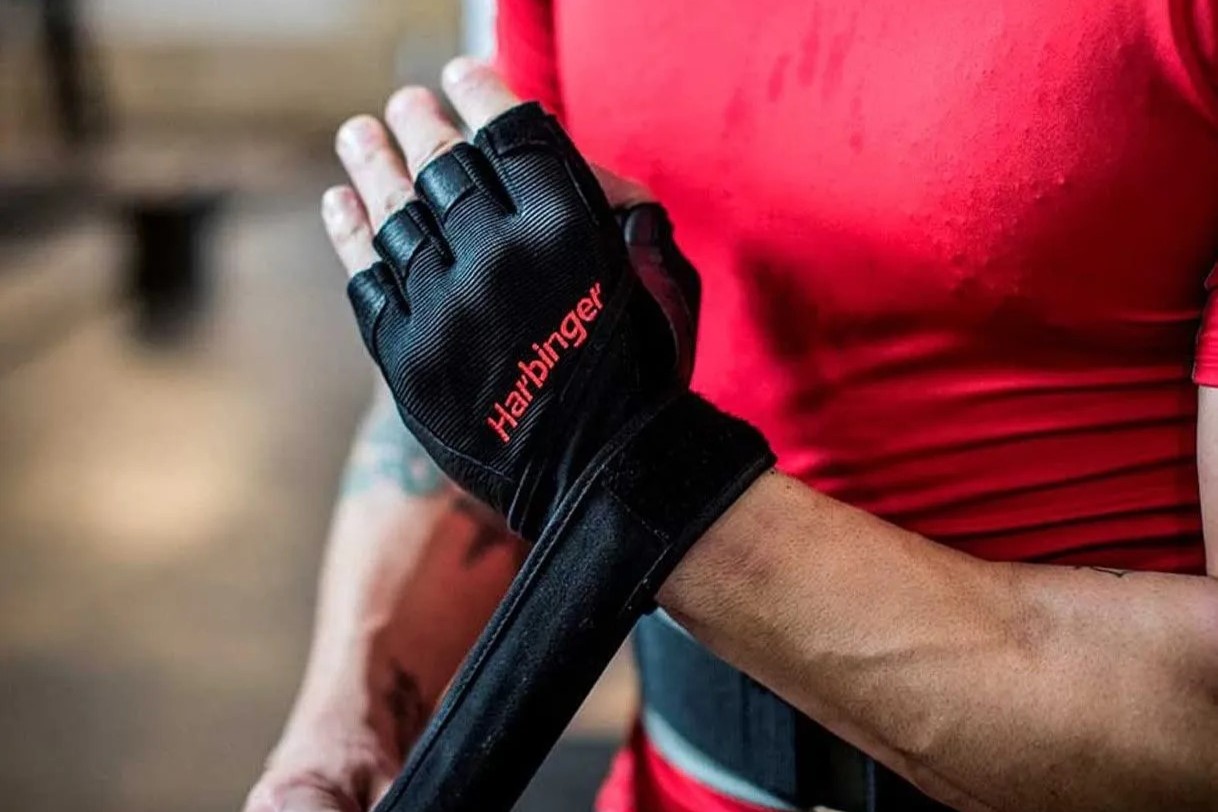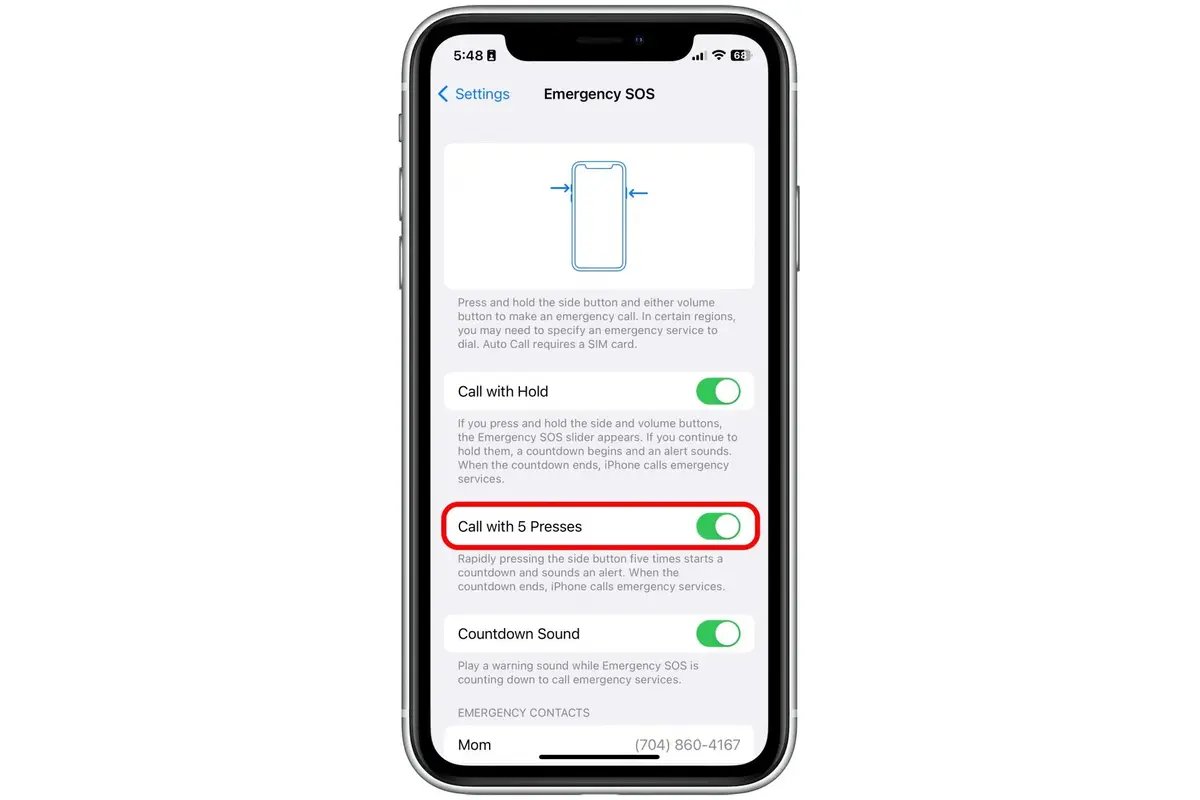Home>Health and Wellness>How To Use Lifting Straps


Health and Wellness
How To Use Lifting Straps
Published: February 29, 2024
Learn how to use lifting straps for better grip and improved performance in your health and wellness routine. Maximize your workouts with this essential fitness accessory.
(Many of the links in this article redirect to a specific reviewed product. Your purchase of these products through affiliate links helps to generate commission for Noodls.com, at no extra cost. Learn more)
Table of Contents
Introduction
Lifting straps are a valuable tool for anyone looking to enhance their strength training routine. Whether you're a seasoned weightlifter or just starting out, lifting straps can provide the extra support needed to push your limits and achieve your fitness goals. These simple yet effective accessories can make a significant difference in your lifting performance, allowing you to target specific muscle groups with greater intensity and focus.
When used correctly, lifting straps can help you maintain a secure grip on heavy weights, preventing them from slipping out of your hands during challenging exercises such as deadlifts, rows, and pull-ups. By reducing the strain on your grip, lifting straps enable you to direct your energy towards the targeted muscles, leading to more effective and efficient workouts.
In this comprehensive guide, we will explore the ins and outs of lifting straps, including their purpose, proper usage, and the benefits they offer. Whether you're a bodybuilder striving to maximize muscle engagement or an athlete aiming to improve overall strength, understanding how to incorporate lifting straps into your training regimen can be a game-changer. Let's delve into the world of lifting straps and uncover the secrets to optimizing your workout routine.
Read more: How To Use Wrist Straps
What are Lifting Straps?
Lifting straps are essential accessories designed to aid weightlifters in maintaining a secure grip on heavy barbells, dumbbells, or other gym equipment during strength training exercises. These straps are typically made of durable materials such as nylon or cotton and feature a looped design that wraps around the lifter's wrist and the barbell or dumbbell. The primary function of lifting straps is to provide additional support to the lifter's grip, allowing them to lift heavier weights and perform exercises with enhanced stability.
The looped end of the lifting strap is wrapped around the barbell or dumbbell, while the other end is secured around the lifter's wrist. This creates a strong connection between the lifter and the weight, effectively reducing the reliance on the grip strength alone. By utilizing lifting straps, lifters can focus more on engaging the targeted muscle groups without being limited by their grip strength, ultimately leading to more effective and targeted workouts.
It's important to note that lifting straps are not meant to replace or compensate for weak grip strength. Instead, they serve as a valuable aid for lifters who aim to push their limits and challenge themselves with heavier weights. Additionally, lifting straps are particularly beneficial for exercises that involve pulling movements, such as deadlifts, rows, and pull-ups, where a secure grip is crucial for maintaining proper form and maximizing muscle engagement.
In summary, lifting straps are a practical tool for weightlifters seeking to optimize their training sessions by ensuring a secure and stable grip on heavy weights. By understanding the purpose and proper usage of lifting straps, lifters can effectively incorporate them into their workout routines to elevate their strength training experience and achieve their fitness objectives.
When to Use Lifting Straps
Lifting straps can be strategically employed in various scenarios to enhance the effectiveness of strength training exercises. Understanding the optimal situations for using lifting straps is crucial for maximizing their benefits while ensuring safe and efficient workouts.
Overcoming Grip Limitations
When performing heavy compound exercises such as deadlifts, barbell rows, or pull-ups, lifters may encounter grip fatigue or limitations before fully engaging their targeted muscle groups. In such instances, lifting straps can serve as a valuable aid by providing additional support to the grip, allowing lifters to continue their sets without being hindered by grip strength. This enables them to focus on the intended muscle groups, promoting better muscle activation and overall workout efficiency.
Targeting Specific Muscle Groups
In exercises where the primary muscle groups being targeted are not directly related to grip strength, such as lat pulldowns or shrugs, lifting straps can be utilized to alleviate the strain on the forearms and wrists. By minimizing the reliance on grip strength, lifters can isolate and engage the intended muscle groups more effectively, leading to enhanced muscle development and improved exercise performance.
Read more: How To Thread A Ratchet Strap
Preventing Grip Fatigue
During high-volume training sessions or extended workouts, grip fatigue can become a limiting factor, hindering the lifter's ability to maintain a secure grip on the weights. Lifting straps offer a practical solution by reducing the strain on the hands and forearms, allowing lifters to sustain their lifting capacity and complete their sets with proper form and control. This can be particularly beneficial for individuals aiming to increase their training volume or endurance without compromising their grip strength.
Plateauing in Strength Progression
For experienced lifters who have reached a plateau in their strength progression due to grip limitations, incorporating lifting straps can provide the necessary support to break through barriers and continue making strength gains. By mitigating the impact of grip fatigue, lifters can challenge themselves with heavier weights, stimulating muscle growth and strength development in a controlled and targeted manner.
In summary, lifting straps are best utilized when grip limitations hinder the execution of exercises, when specific muscle groups need to be isolated and targeted, or when sustained grip strength is essential for prolonged or high-volume training. By recognizing these scenarios and incorporating lifting straps strategically, lifters can optimize their strength training routines and achieve their fitness goals more effectively.
How to Use Lifting Straps
Using lifting straps correctly is essential to ensure their effectiveness in enhancing your strength training workouts. Here's a step-by-step guide on how to use lifting straps properly:
-
Selecting the Right Straps: Choose lifting straps made of durable and high-quality materials, such as nylon or cotton, to ensure they can withstand the demands of heavy lifting. Additionally, opt for straps with a comfortable width and length that can securely wrap around the barbell or dumbbell and your wrists.
-
Preparing the Straps: Before using the lifting straps, ensure they are properly threaded through the loop and are free from any twists or tangles. This will help maintain a secure and even grip on the weight during the exercise.
-
Wrapping the Straps Around the Barbell or Dumbbell: Hold the lifting strap in one hand and wrap the looped end around the barbell or dumbbell's handle. Make sure the strap is positioned close to the base of your fingers to maximize the contact area and grip stability.
-
Creating a Secure Loop: Once the strap is wrapped around the barbell or dumbbell, feed the loose end of the strap through the loop and pull it tight to create a secure connection. The strap should be snugly wrapped around the weight, ensuring a firm and stable grip.
-
Securing the Straps Around Your Wrists: After securing the straps to the barbell or dumbbell, place your hands through the loops of the lifting straps and wrap them around your wrists. Adjust the tightness to a comfortable yet secure level, allowing for proper blood circulation while maintaining a strong grip on the weight.
-
Testing the Grip: Before initiating the exercise, perform a few light test lifts to ensure the lifting straps are securely fastened and provide the desired support. Adjust the positioning and tightness of the straps as needed to optimize your grip and comfort.
-
Executing the Exercise: With the lifting straps securely in place, proceed with the intended exercise, focusing on maintaining proper form and engaging the targeted muscle groups. The lifting straps should enable you to lift the weight with enhanced stability and control, allowing you to maximize the effectiveness of the exercise.
By following these steps, you can effectively use lifting straps to bolster your grip and elevate your strength training performance. Proper usage of lifting straps not only enhances your lifting capacity but also minimizes the risk of grip fatigue, enabling you to concentrate on the targeted muscle groups and achieve optimal workout results.
Benefits of Using Lifting Straps
Using lifting straps offers a myriad of benefits that can significantly enhance your strength training experience and overall workout performance. By incorporating lifting straps into your routine, you can unlock new opportunities for muscle engagement, strength progression, and exercise efficiency. Here are the key benefits of using lifting straps:
Enhanced Grip Support
Lifting straps provide invaluable support for maintaining a secure grip on heavy weights, especially during exercises that place a high demand on grip strength. By minimizing the reliance on your natural grip, lifting straps enable you to lift heavier weights with greater confidence and stability. This enhanced grip support allows you to focus on the targeted muscle groups without being limited by grip fatigue, ultimately leading to more effective and targeted workouts.
Increased Muscle Engagement
With the assistance of lifting straps, you can direct your energy towards engaging specific muscle groups without the distraction of grip limitations. This heightened muscle engagement is particularly beneficial for exercises such as deadlifts, rows, and pull-ups, where a secure grip is essential for maintaining proper form and maximizing muscle activation. By utilizing lifting straps, you can isolate and intensify the workload on the intended muscles, leading to enhanced muscle recruitment and development.
Overcoming Plateaus
For experienced lifters who have reached a plateau in their strength progression due to grip limitations, incorporating lifting straps can provide the necessary support to break through barriers and continue making strength gains. By mitigating the impact of grip fatigue, lifting straps allow you to challenge yourself with heavier weights, stimulating muscle growth and strength development in a controlled and targeted manner. This can reignite your progress and propel you towards achieving new personal bests in your strength training journey.
Reduced Grip Fatigue
During high-volume training sessions or extended workouts, grip fatigue can impede your ability to maintain a secure grip on the weights, compromising your exercise performance. Lifting straps offer a practical solution by reducing the strain on your hands and forearms, allowing you to sustain your lifting capacity and complete your sets with proper form and control. This alleviation of grip fatigue enables you to extend your training duration and volume, leading to more comprehensive and impactful workouts.
Read more: How To Loosen Straps On Graco Car Seat
Targeted Muscle Isolation
Lifting straps enable you to isolate and target specific muscle groups with precision, as they alleviate the strain on the forearms and wrists during exercises such as lat pulldowns or shrugs. By minimizing the reliance on grip strength, lifting straps allow you to direct your focus towards the intended muscles, promoting optimal muscle isolation and engagement. This targeted approach facilitates more effective muscle development and refinement, contributing to a well-rounded and balanced physique.
Incorporating lifting straps into your strength training regimen can revolutionize the way you approach your workouts, empowering you to push beyond your limits and achieve remarkable results. By harnessing the benefits of lifting straps, you can elevate your training experience, optimize muscle engagement, and unlock new dimensions of strength and performance.
Precautions and Tips for Using Lifting Straps
When incorporating lifting straps into your strength training routine, it's essential to observe certain precautions and adhere to best practices to ensure safe and effective usage. Here are valuable precautions and tips to consider when using lifting straps:
Proper Technique
Maintaining proper form and technique is crucial when using lifting straps. While lifting straps provide valuable support for your grip, it's important not to rely solely on them to compensate for poor lifting form. Ensure that you maintain a strong and stable posture throughout the exercise, engaging the targeted muscle groups while utilizing the lifting straps as a supplementary aid.
Gradual Progression
When integrating lifting straps into your workouts, it's advisable to gradually acclimate your body to their use, especially if you're new to incorporating this accessory. Start with lighter weights and familiarize yourself with the sensation of using lifting straps before progressing to heavier loads. This gradual approach allows your body to adapt to the additional support provided by the lifting straps, reducing the risk of overexertion or strain.
Read more: How To Use Thinning Shears
Grip Strength Training
While lifting straps can offer valuable assistance, it's important to continue incorporating grip strength training exercises into your routine. Maintaining and improving your natural grip strength is essential for overall functional fitness and injury prevention. By including exercises specifically targeting grip strength, such as farmer's walks, wrist curls, and plate pinches, you can ensure a well-rounded approach to enhancing your overall strength and stability.
Proper Strap Positioning
Ensuring the correct positioning of the lifting straps is vital for their effectiveness and your safety during exercises. The looped end of the lifting strap should be securely wrapped around the barbell or dumbbell, positioned close to the base of your fingers to maximize grip stability. Additionally, the straps should be comfortably secured around your wrists, allowing for proper blood circulation while maintaining a strong and secure grip on the weight.
Regular Maintenance
Regularly inspecting and maintaining your lifting straps is essential for their longevity and performance. Check for any signs of wear and tear, such as fraying or weakening of the material, and promptly replace any damaged straps. Keeping your lifting straps in good condition ensures their reliability and safety during your strength training sessions.
Exercise Specificity
While lifting straps can be beneficial for certain exercises, it's important to assess their necessity for each workout. Exercises that primarily target grip strength, such as kettlebell swings or barbell holds, may not require the use of lifting straps. Evaluate the specific demands of each exercise and determine whether the inclusion of lifting straps aligns with your training objectives and the targeted muscle groups.
By heeding these precautions and tips, you can optimize the usage of lifting straps in your strength training regimen, promoting safe and effective integration of this valuable accessory into your workouts. Prioritizing proper technique, gradual progression, and maintenance, while acknowledging the importance of grip strength training, will empower you to leverage the benefits of lifting straps while minimizing potential risks.
Read more: How To Use A Curling Iron
Conclusion
In conclusion, lifting straps serve as indispensable tools for enhancing strength training workouts, offering valuable support for maintaining a secure grip on heavy weights and optimizing muscle engagement. By strategically incorporating lifting straps into your routine, you can overcome grip limitations, isolate targeted muscle groups, and push beyond plateaus in strength progression. The benefits of using lifting straps extend beyond mere assistance with grip; they enable lifters to unlock new dimensions of strength and performance, ultimately shaping a more effective and efficient workout experience.
When used judiciously, lifting straps can be instrumental in amplifying the effectiveness of strength training exercises, allowing lifters to focus on the intended muscle groups without being hindered by grip fatigue. The enhanced grip support provided by lifting straps empowers lifters to lift heavier weights with confidence and stability, fostering a conducive environment for muscle development and strength gains. Moreover, the ability to isolate specific muscle groups with precision, facilitated by lifting straps, contributes to a more targeted and impactful workout regimen.
It is essential to approach the usage of lifting straps with a balanced perspective, recognizing their role as supplementary aids rather than substitutes for natural grip strength. By observing proper technique, gradually acclimating to their use, and maintaining a focus on grip strength training, lifters can harness the benefits of lifting straps while safeguarding against potential pitfalls. Additionally, exercising discretion in the application of lifting straps, considering exercise specificity and the demands of each workout, ensures a tailored and purposeful integration of this accessory into the training regimen.
Ultimately, the incorporation of lifting straps into strength training routines represents a strategic approach to optimizing workout performance and achieving fitness goals. By embracing the benefits of lifting straps while upholding best practices and precautions, lifters can elevate their training experience, break through barriers, and unlock their full potential in pursuit of strength and muscular development. With a comprehensive understanding of when and how to use lifting straps, individuals can embark on a journey towards more impactful and rewarding strength training endeavors.










